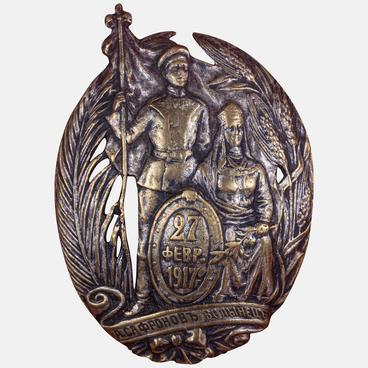The Ulyanovsk Regional Museum of Local Lore named after Ivan Goncharov presents the chain of the peace arbitrator “February 19, 1861”.
In 1859, the position of the peace arbitrator was established in the Russian Empire to settle land issues between landowners and peasants and oversee peasant institutions. Peace arbitrators were appointed by governors and approved by the Senate. The court of appeal for them was the uyezd congresses, and the court of cassation was the governorate congress on peasant affairs. There were no peace congresses in the Transcaucasian governorates; the governorate offices acted as the court of appeal.
The Main Committee on the Peasant Question proposed to introduce justices of peace and uyezd justices to resolve disputes between landowners and temporarily obliged peasants settled on their lands. The proposals on merging both classes — landowners and peasants —in the peace peasant institutions were Imperially Established as the main principles on March 25, 1859. They boiled down to the following: justices of peace were to be elected by peasants for three years from local noble landowners, combining the known conditions of personal and land qualifications. The second instance of peasant institutions — the uyezd jurisdiction — was supposed to be a permanent office, chaired by one of the peace arbitrators. It had two assessors — one from the landowners, the other from the peasants. The decisions of the peace arbitrators could be appealed before the uyezd peace congress (a meeting of all peace arbitrators of the uyezd with the participation of the uyezd marshal of the nobility and a permanent representative from the Ministry of Internal Affairs), which was regulated by the cassation authority — the governorate office on peasant affairs.
According to the Regulations on changes in the structure of local institutions for peasant affairs dated June 27, 1874, the positions of peace arbitrators were abolished throughout almost the entire territory of European Russia, and most of their responsibilities were transferred to the uyezd offices for peasant affairs. Subsequently, the positions of peace arbitrators were abolished in the Astrakhan, Orenburg and Ufa Governorates (1877), the Bessarabian, Vitebsk, Minsk and Mogilev Governorates (1878); these positions remained until 1917 in Transcaucasia, as well as in the Kyiv, Volyn and Podolsk Governorates. The institution of zemstvo chiefs, introduced in 1889, had many similarities with the institution and duties of peace arbitrators.


